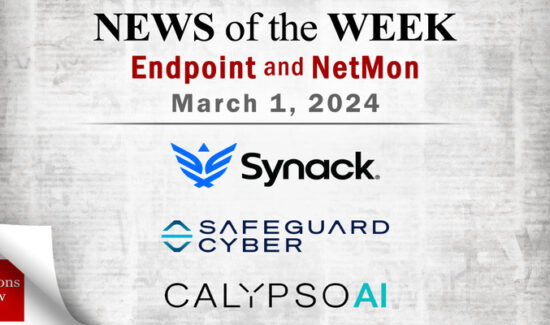Why Should You Protect Your Enterprise Endpoints?


We here at Solutions Review write time and again about the importance of protecting your enterprise endpoints. We often discuss the necessity of deploying an endpoint security solution (or endpoint protection platform) on your network. Additionally, we describe at length hackers’ sinister designs on employee endpoints and their tactics.
However, we’ve rarely broken down the conversation to its base elements. What are endpoints? What actually threatens them? Why do you need a next-generation endpoint security solution? Actually, what does “next-generation” even mean in this context?
The editors at Solutions Review decided to help you answer those question in one convenient article. Afterward, we hope you’ll have all the information you’ll need to make the right solution decision for your enterprise.
Let’s get started!
What are Endpoints?
At its core, endpoint security concerns itself with protecting your endpoints. These compromise of any device connecting your network—not just the devices explicitly located on your business premises. These can include laptops, old-school tower desktops, mobile devices, and the Internet of Things (IoT) devices.
Each device requires a minimum level of protection to ensure its safety in the digital marketplace.
Why Should You Protect Your Endpoints?
Endpoints serve as the gateways into your enterprise network. Everything begins at the endpoint: each login occurs at the endpoint, and users interact with your most valuable and sensitive databases through their endpoints.
Therefore, each device can serve as a stepping stone for hackers into your larger network and to your digital assets. Furthermore, each endpoint can contain valuable data and customer information in its own right. An attack on a single endpoint can constitute a major breach.
Adding to your worries, more endpoints connecting to your network results in a larger attack surface; larger enterprises are thus more vulnerable to an endpoint-targeted attack. Therefore, your enterprise must make improving your visibility on, and of, your endpoints a high priority, regardless of your size.
How Can Hackers Threaten Your Endpoints?
Now that you know the importance of protecting your endpoints, you need to understand what threats they face every day. After all, you cannot protect against what you can’t anticipate.
We can’t begin to cover all of the possible digital threats your business might face in the daily digital world; we’d never be able to stop. Instead, we present a few of the most common and most pressing forms.
Business Email Compromises/Phishing
The prime method through which employees interact with other endpoints and with other actors (both normal and malicious) is through their email account. Therefore, hackers work to weaponize emails through business email compromises (BECs) or phishing. The former often deliver malicious payloads which can contain any number of disparate threats.
However, phishing, in particular, proves a serious peril. These emails present themselves as legitimate messages from enterprise supervisors and administrators, third-party communications, or urgent financial institution warnings. Without proper training, employees may never second these messages and hand over their credentials to them—exactly as intended.
Ransomware
Hackers can, through malware called ransomware, hold entire endpoints or network hostage for payment (often in some kind of cryptocurrency). They can also hold sensitive files hostage, allowing the victims to use the rest of their endpoint but depriving them of the ability to complete their jobs.
Ransomware can prove difficult to remove, as hackers can trigger file destruction for nonpayment or removal attempts. But paying the ransom doesn’t guarantee your safety; hackers can always leave themselves a backdoor to do it again at a later day.
Cryptocurrency Mining Malware
A new player in the hacking world, cryptocurrency mining malware (sometimes also called cryptojacking) subtly exploits where ransomware blatantly attacks. It uses endpoints’ natural processes to mine (a kind of calculation-for-pay) cryptocurrency for hackers’ benefits; this can significantly reduce your endpoints’ processing power and cost you a significant amount in electricity consumption.
Zero-Day Attacks
Once in a while, hackers find a security vulnerability vendors or manufacturers have not yet detected or patched. These become zero-day exploits, as hackers essentially catch their opponents off-guard.
How Should You Protect Your Endpoints?
Many enterprises believe their current antivirus program protects them adequately against modern threats. However, this is not the case.
If you’ve had the same kind of antivirus program for a while, it may no longer offer the same levels of protections it did previously. These solutions, called legacy antivirus, often have a lot of perks. Most likely, your enterprise is familiar with them, and most if not all of your endpoints already carry it.
However, as we’ve stated before, these legacy antivirus solutions just can’t keep up with modern cyber attacks. Often, they can’t detect fileless malware, a new kind of attack which evades traditional detection methods. Many antivirus solutions don’t receive the same level of updates they once did, so they may have security vulnerabilities.
Your enterprise should instead select a next-generation endpoint security solution. Next-generation here means it is modern and capable of handling modern threats. In addition, it contains certain key capabilities, usually including:
Honeypots
A fake server which can only be accessed by hacking. It gives hackers false information to deceive them while security teams work to close the security hole which allowed them in.
Sandboxing
Another fake IT environment, this one allows IT security teams to simulate the network and see how a suspicious program will behave. If it is malicious, it gives them an opportunity to safely remove it.
Endpoint Detection and Response (EDR)
EDR allows endpoint security to detect threats which penetrated the network and alert security teams. As the digital perimeter expands to accommodate the cloud and mobile endpoints, this feature becomes ever more important.
You endpoints’ security is in your hands. With this information, you should have a foundation to begin researching new solutions and selecting the right one for your business!
























